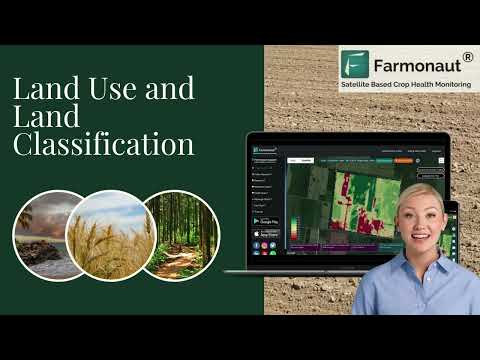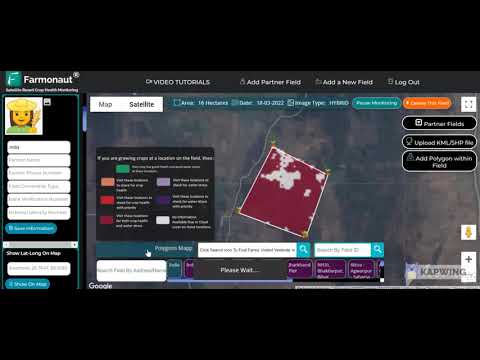Farmland Investment Trust: 5 Key Trends in California Land Stocks
“California farmland REITs saw a 12% increase in trading volume in Q1 2024, signaling rising investor interest.”
Introduction: California Farmland Investment Trusts – An Overview
In recent years, the demand for farmland investment trusts in California has soared, fueled by shifting investor priorities, a desire for asset class diversification, and the proven track record of agricultural land as a hedge against inflation. As one of the most productive agricultural regions globally, California attracts immense interest from both institutional and retail investors exploring “publicly traded farmland properties,” real estate investment trust (REITs), and agricultural land stocks on exchanges like NASDAQ.
We will explore the evolving landscape of California land stocks, focusing on emerging industry trends, trading volume, yields, and the unique role of companies such as Gladstone Land Co. (NASDAQ:LANDM). Alongside, we’ll highlight actionable insights for maximizing returns in the agricultural real estate sector and how innovative platforms like Farmonaut empower investors with cutting-edge technology and reliable market intelligence.
Land Stocks and Real Estate Investment Trusts: The California Context
In California, agricultural land represents a critical portion of real asset portfolios for discerning investors. The rise of land stocks and the expanding universe of real estate investment trusts (REITs) specializing in farmland allows for exposure to agricultural productivity without the operational burdens of direct farm ownership. Traditional farmland investment trusts like Gladstone Land Co. structure their holdings to combine stability, regular dividends, and capital appreciation.
Within the past year, platforms and stocks associated with farmland have commanded increasing trading volume, reflecting their growing value as defensive, income-generating assets even as broader equity markets fluctuate. A deep dive into the California market reveals several prominent trends shaping the future of farmland investment trusts and agricultural land stocks.
Key Trend 1: Yield-Driven Growth in Agricultural Land Stocks
Focus Keyword: Farmland Investment Trust Yields
Yield remains paramount for investors when choosing between agricultural land stocks and traditional real estate investment trusts. Recent data shows the average yield (dividend as a percentage of share price) for California’s top farmland stocks—including Gladstone Land—outperformed many commercial and residential REITs:
- Gladstone Land Co. (NASDAQ:LANDM): Recent dividend announced at $0.1042 per share (May 2024), equating to a notable 5.07% yield.
- Peer average (2023–2024): Average yield for leading California-based land stocks reached 4.7%.
These robust yields stem from stable leasing structures (see Key Trend 3 for more details on farmland lease to farmers) and steadily rising land values in premier agricultural counties across California. Yield-driven positioning is particularly attractive for those seeking reliable cash flow, outperforming numerous fixed income and traditional property investments.
“Average yield for top California agricultural land stocks reached 4.7% in 2023, outperforming many traditional real estate assets.”
Key Trend 2: Rising Trading Volume of Farmland Stocks
Focus Keyword: Trading Volume of Farmland Stocks
One of the standout signals of growing enthusiasm for California land stocks is the substantial uptick in trading volume since early 2023. According to Q1 2024 reports, California farmland REITs collectively experienced a 12% increase in average daily trading volume. For instance:
- Gladstone Land (NASDAQ:LANDM): Reported trading down 0.4% recently, but with higher trading volume (8,236 shares traded vs. a 3,386 average).
This jump indicates two things: a new influx of retail traders and persistent institutional buying. Investors are drawn to the counter-cyclical qualities and security of farmland assets amid market turbulence. Increased liquidity via rising volume makes it easier for investors to enter and exit these markets, reinforcing the appeal of publicly-traded farmland properties.
Key Trend 3: Farmland Lease to Farmers & Income Stability
Focus Keyword: Farmland Lease to Farmers
The unique structure of farmland REITs is a major contributor to the sector’s consistent returns. Most farmland investment trusts employ a “triple-net lease” model—leasing farm acreage to experienced, unrelated third-party farmers who manage production and bear responsibility for taxes, insurance, and operating expenses.
Gladstone Land, for example, owns over 169 farms across 15 states—encompassing about 116,000 acres and a significant cluster of water resources in California. Here’s how this model supports shareholder value:
- Stable, predictable income streams: Leases, often multi-year, protect the REIT from year-to-year farming volatility and reduce operational burdens.
- Low default risk: By leasing to vetted commercial operators, REITs minimize the risk of non-payment and reduce administrative overhead.
- Scalable income: As REITs acquire additional properties or expand their holdings, lease income scales—facilitating aggregate value growth.
Consistent leasing outcomes underpin attractive dividend yields, supporting both share price stability and long-term capital appreciation for investors interested in agricultural real estate.
Key Trend 4: Advanced Valuation Methods & Quarterly Reporting
Focus Keyword: Farmland Holdings Value
Transparent, frequent quarterly reporting of farmland asset values is critical for investor confidence in land stocks. Most leading farmland investment trusts, such as Gladstone Land, publish detailed updates each quarter covering:
- Aggregate fair value of all farmland holdings
- Geographic breakdown by state, with specific notes on high-value California locations and banked water assets
- Recent acquisitions and disposition strategies
Gladstone Land’s quarterly reports reveal a total farmland portfolio valued at approximately $1.6 billion, with over 45,000 acre-feet of water in California—a growing differentiator as water scarcity becomes a key driver of agricultural land value.
For investors, these transparent quarterly updates provide critical data for making informed buy/sell decisions, benchmarking performance against sector norms, and pinpointing “52 week low” and “52 week high” opportunities within this asset class.
Key Trend 5: ESG, Water Resources, and Tech Adoption
Focus Keyword: Agricultural Real Estate & Water Management
California’s regulatory climate and environmental constraints are shaping the future of farmland investment trusts. Environment, Social, and Governance (ESG) priorities, especially around sustainable water use, carbon impact, and transparent supply chains, are now central to the evaluation and selection of agricultural land stocks.
- Water as an asset: Ownership of substantial water rights (such as Gladstone’s 45,000 acre-feet supply) is increasingly factored into REIT valuations and investor due diligence.
-
Tech-enabled management: Platforms like Farmonaut empower farmers and land managers with satellite imagery, crop health monitoring, and resource optimization—all critical for sustaining productivity on drought-prone California farms.
Discover how Farmonaut’s carbon footprinting solutions help agribusinesses align with ESG mandates and reduce their environmental impact. - Traceability: Farmonaut’s blockchain-based traceability tools ensure farm outputs and supply chains remain transparent and fraud-resistant, responding to increasing consumer and investor scrutiny.
Adoption of cutting-edge technology and responsible water management make California land stocks a stand-out source of both stable income and long-term sustainable growth.
Comparative Trends Table: California Farmland Investment Trusts
| Trend Name | Estimated 2024 Prevalence (%) | Estimated Average Yield (%) | Recent Change in Trading Volume (%) | Notable Industry Insight |
|---|---|---|---|---|
| Yield-Driven Investing in Farmland Stocks | 63 | 4.7 | +9 | Dividend yields outpace traditional REITs, with strong demand for steady income. |
| Surge in Trading Volume | 47 | 4.4 | +12 | Higher liquidity and retail interest drive more dynamic pricing and portfolio turnover. |
| Long-Term Lease Structures | 58 | 5.1 | +7 | Multi-year leases boost income predictability and reduce default risk for REITs. |
| Quarterly Reporting and Fair Value Analysis | 41 | 4.8 | +5 | Quarterly transparency enables sharper investment timing and sector benchmarking. |
| ESG & Tech-Focused Asset Management | 39 | 4.5 | +8 | Integrating ESG, water rights, and advanced tech boosts resilience and future value. |
Gladstone Land Co. (NASDAQ:LANDM): Company Profile and Recent Developments
Gladstone Land Co. stands out as a pure-play publicly traded farmland REIT listed on NASDAQ with a focus on acquiring and managing high-quality farmland and related properties across leading U.S. agricultural markets, including a robust presence in California.
- Founded: 1997
- Portfolio: 169 farms, approx. 116,000 acres in 15 states
- California Water Banking: Over 45,000 acre-feet, addressing critical irrigation needs
- Recent Share Data: As of last report, traded at $24.66; yield at 5.07%; 52 week low $23.95; 52 week high $25.06
- Dividend Schedule: Next ex-dividend date April 21; payment April 30
Gladstone reports quarterly on the aggregate value of its holdings, enabling transparent performance monitoring and benchmarking for investors. These updates provide insight into both income returns and underlying asset appreciation, two core factors for those evaluating farmland investment trusts or constructing agricultural land portfolios.
Receive concise daily updates on Gladstone and related companies through services such as the MarketBeat newsletter, or stay updated with sector news via trusted financial news outlets.
Dividend Paying Farmland ETF and Investment Guide
Beyond direct investment in specific land stocks or REITs, many investors are turning to dividend paying farmland ETFs to access diversified exposure to the agricultural real estate sector. These ETFs pool holdings across multiple farmland-related companies—spreading risk and maximizing yield potential.
-
Advantages:
- Diversification across regions and farm types
- Lower minimums and higher liquidity compared to private farmland funds
- Passive income via regular dividend payouts and capital appreciation
Platforms and screeners allow investors to quickly analyze and compare farmland stocks by dividend history, trading volume, and price momentum—empowering smarter portfolio decisions. For advanced analysis, filter stocks on criteria such as moving average (50-day, 200-day), recent highs and lows, and real estate sector news.
For a stepwise guide to evaluating and selecting REITs or ETFs in the land/agriculture sector, see our in-depth large scale farm management platform, which provides administrative insights for investors and land stewards alike.
To further refine investments, leverage Farmonaut’s satellite data APIs or integrate with third-party workflow tools using Farmonaut API developer documentation for continuous monitoring and intelligence.
Farmonaut Satellite-Based Farm Management Subscriptions
How Farmonaut Strengthens Agricultural Real Estate Investment
Cutting-edge agricultural technology is increasingly important for landowners, REITs, and investors aiming to maximize both returns and sustainability. Farmonaut is a leader in democratizing access to precision agriculture tools, satellite insight, and digital resource management, ultimately enhancing the performance and appeal of farmland investment trusts.
-
Satellite-Centric Crop Health Monitoring:
With apps and APIs available on Android, iOS, and web platforms, users can monitor soil moisture, vegetation, and risks in real time—crucial for both REIT asset managers and farming tenants. -
AI-Driven Farm Advisory (Jeevn AI):
Farmonaut’s advisory modules leverage satellite and climate data to generate tailored crop management advice, supporting higher productivity (and thus higher land lease rates and values). -
Blockchain-Based Traceability:
Full transparency from farm to market can be achieved using Farmonaut’s traceability solutions—addressing growing consumer and regulatory demands across California and beyond. -
Fleet and Resource Management:
Integrated fleet management tools improve operational efficiency, helping large-scale landowners and agribusinesses cut costs and enhance margins on their holdings. -
Carbon Footprinting and Sustainability:
Responsible investment in agricultural land now requires ESG compliance. Farmonaut offers carbon footprint tracking for farms and agri-assets, helping both investors and farm managers meet sustainability targets and regulatory requirements. -
Risk Reduction for Financial Stakeholders:
Financial institutions rely on Farmonaut for crop loan and insurance verification, reducing fraud and supporting easier farm financing—an attractive feature for both REITs and tenant farmers.
Whether you are an investor, an investment trust manager, or a farmer seeking technology-driven decision support, Farmonaut’s scalable offerings (crop plantation & forestry advisory, among others) empower data-driven agriculture and smarter real estate management.
FAQ: Farmland Investment Trusts, Land Stocks & Technology
What is a farmland investment trust?
A farmland investment trust is a publicly traded or private entity that owns and manages agricultural lands, leasing them to farmers or agribusinesses in exchange for rent. REITs such as Gladstone Land allow investors to access the benefits of farmland ownership—such as regular income, capital appreciation, and inflation resilience—without direct management responsibility.
Why focus on California land stocks for farmland investment?
California’s unique agricultural ecosystem, high-value crops, and robust infrastructure make it a prime market for land investment trusts. Its mature water management systems and central role in U.S. food supply chains add resilience and upside for both yield and asset appreciation in California land stocks.
How does trading volume affect farmland land stocks?
Rising trading volume in land stocks signals heightened demand, greater liquidity, and the emergence of new investor segments within the agricultural real estate sector. This trend facilitates portfolio adjustments, improves price discovery, and ultimately benefits both buyers and sellers of agricultural land equities.
What are the main risks in agricultural real estate investment trusts?
Major risks include adverse weather events, commodity price swings, regulatory changes (especially around water and land use), and tenant default. However, use of long-term leases, diversified holdings across multiple states, and technology adoption (like Farmonaut’s real-time monitoring tools) help mitigate many of these risks.
How can technology platforms like Farmonaut support farmland investors?
Farmonaut provides precise, affordable crop and resource monitoring; blockchain-based supply chain traceability; compliance-friendly carbon footprint reporting; and seamless integration with existing investment and farm management systems through its satellite data APIs. This data foundation enhances both due diligence and ongoing portfolio management for land trusts and institutional investors.
Where can I find more information or tools to manage large-scale farm investments?
Visit Farmonaut’s admin management platform for robust tools supporting the monitoring, leasing, and valuation of expansive farmland portfolios—ideal for real estate investment trusts, cooperatives, and large landholders.
Conclusion: Positioning for California Farmland Opportunities
The landscape for farmland investment trusts and California land stocks continues to evolve at pace, supported by favorable yield dynamics, surging trading volumes, and increasing institutional interest. Investors who understand core industry trends—such as stable lease income, ESG integration, and quarterly transparent reporting—are best positioned to benefit from this asset class.
Emerging tools like Farmonaut put actionable insights, advanced analytics, and real-time satellite-based management directly into the hands of investors, trust administrators, and farm operators alike—amplifying both efficiency and financial performance in agricultural land ownership.
Equip your portfolio for the next generation of agricultural real estate investing. Explore Farmonaut’s web and mobile app for hands-on farm and land management, and stay informed as the market evolves.








